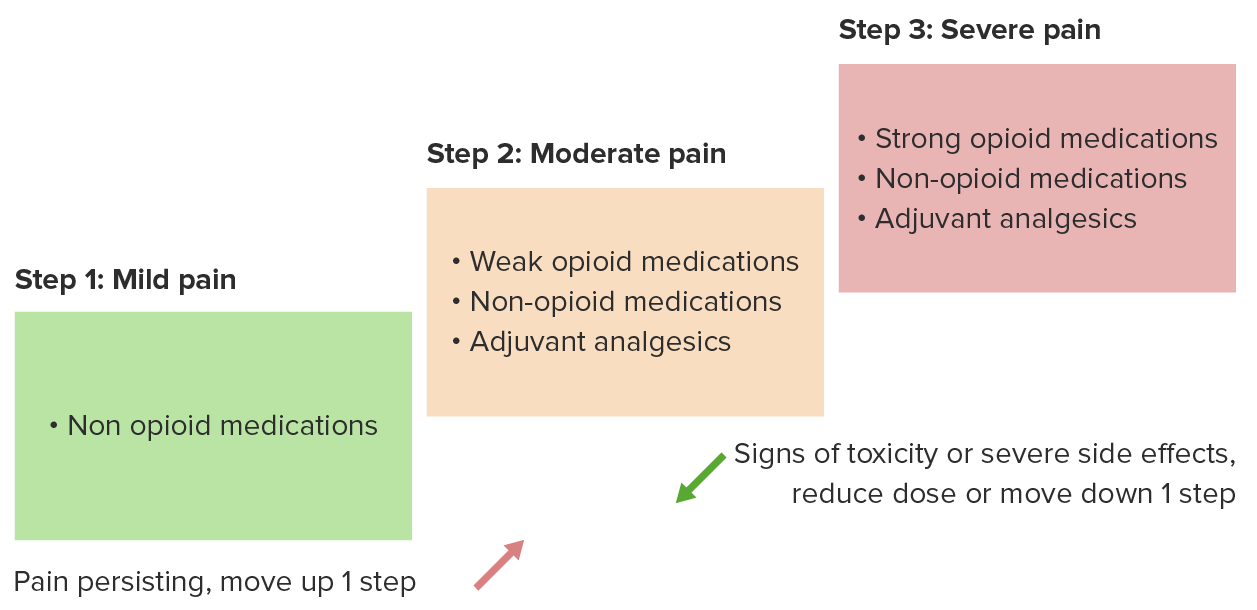Playlist
Show Playlist
Hide Playlist
Pain Management: Lower Back Pain with Case
-
Slides Pain ChronicCare.pdf
-
Download Lecture Overview
00:01 So, now, we’re going to discuss the important issue of pain management and this has got a lot of attention in the United States, in particular over the past few years with the opioid crisis that we've been facing. 00:11 I’m going to discuss pain management in the context of the whole patient and from the beginning of pain where I see a lot of patients who have more mild to moderate pain before they get to severe pain. 00:22 But we will cover opiates too at the end, some the limitations that they have. 00:28 So, just to understand the epidemiology of pain, this is an Internet-based survey of over 27,000 US adults. 00:36 The prevalence of pain that was chronic, over six months in duration, was about 30%, more common among females and males with chronic pain. 00:45 Most common cause of pain, low back pain. 00:48 Secondarily was osteoarthritis coming at number two. 00:53 And I thought it was important in the study that half of these patients with more than six months of pain were experiencing pain daily and a third of them qualified their pain as severe. 01:02 So, there's just a lot of pain out there among the general US population. 01:07 And that's why the use of drugs in general is so high. 01:12 Between chronic illnesses and conditions such as pain, about half of Americans have received at least one prescription in the past month, and this is all Americans – man, woman, child. 01:26 The overall rate of using at least five prescription drugs among adults is 11%. 01:30 So, this starts to be a lot of medications that patients are taking. 01:34 In particular in older adults, over a third are using at least five prescription drugs at any one time. 01:41 Then if you just take a step back, I mentioned that about half of Americans are taking some kind of medication prescribed. 01:50 Well, about half of adults who are middle-aged and older are also using over-the-counter medications. 01:56 And the risk for drug-drug interactions in examining these patients is pretty high. 02:02 Overall, it’s about 4% among middle-aged and older adults, the risk of drug-drug interactions. 02:09 And half of these cases involve medications that are over-the-counter that the doctor treating the patient may not even know about. 02:17 And the biggest problem with these medications is drugs that promote bleeding. 02:21 So, that’s something to be particularly cognizant about. 02:23 So, it’s the non-steroidal anti-inflammatory drug you’re taking over the counter along with the prescribed aspirin or warfarin that you may be taking, and those have a strong interaction for bleeding, obviously. 02:36 So, let’s look at a case of low back pain. 02:38 I’ve got a 45-year-old man with a one-week history of low back pain without radiation or associated symptoms. 02:46 He has a history of hypertension and he’s not tried any analgesics yet. 02:51 So, what's the most recommended treatment initially for this case where he hasn't tried anything yet for his low back pain? Is it, A, acetaminophen; B, naproxen; C, tramadol; or D, oral diclofenac? The answer is A, acetaminophen. 03:07 So, guidelines from the American Pain Society say that acetaminophen, NSAIDs and muscle relaxants are all associated with a mild to moderate decrease in pain on a 100-point scale. 03:22 There's not much to really separate them. 03:25 They have, again, a mild to moderate improvement in causing significant pain relief. 03:32 The trials – the clinical trials of these agents have generally been pretty short, with very little evidence of how they improved function. 03:39 I very much believe that function is actually a more important outcome than pain for many patients. 03:46 And there’s very few studies of combination therapy. 03:49 Most patients may use acetaminophen with an NSAID and/or a muscle relaxant together, but there’s little to recommend that practice because there’s little research on it.
About the Lecture
The lecture Pain Management: Lower Back Pain with Case by Charles Vega, MD is from the course Chronic Care.
Included Quiz Questions
Which of the following locations of pain is most common in a primary care setting in the United States?
- Lower back
- Knee
- Neck
- Foot
- Shoulder
What is the most common side effect of nonsteroidal anti-inflammatory medications for pain relief?
- Gastrointestinal bleeding
- Osteoporosis
- Ischemic heart disease
- Diabetes mellitus
- Renal failure
Which of the following medications is the most effective first-line treatment for acute low back pain?
- Nonsteroidal anti-inflammatory drugs
- Heat therapy
- Cyclobenzaprine
- Methocarbamol
- Carisoprodol
Customer reviews
5,0 of 5 stars
| 5 Stars |
|
5 |
| 4 Stars |
|
0 |
| 3 Stars |
|
0 |
| 2 Stars |
|
0 |
| 1 Star |
|
0 |




